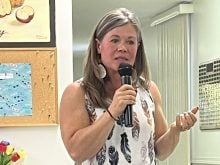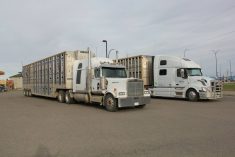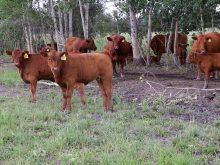WINNIPEG – Disposing of ruminant byproducts is a continuing problem for rendering companies, which face international regulations and soaring costs to segregate ruminant material because of concerns over transmissible encephalopathies.
Everything changed for renderers when the American market closed on May 20 after it was announced BSE had been found in an Alberta cow, said Rothsays Inc. spokesperson Al Delichte at a Manitoba agriculture council meeting.
“When this happened, our options became clear. In order for our plants to survive we had to remove ruminant material in order to get back into U.S. markets,” Delichte said.
Read Also

August rain welcome, but offered limited relief
Increased precipitation in August aids farmers prior to harvest in southern prairies of Canada.
“We were probably very smug that we were doing everything right in North America.”
The Manitoba rendering company handled about seven million pounds or 3,300 tonnes of byproducts a week before May 20. Cattle byproducts made up 250 tonnes of that business.
Disposing of beef material is costly and companies started charging to pick up dead stock. Rothsays also set up a facility that handles only non-ruminant material so it could resume U.S. sales.
Earlier this summer renderers started sending ruminant material to landfills, but Delichte said this is costly and could become more expensive during the winter.
His company is considering finding a warehouse for storage or sending ruminant material to Saskatoon for rendering. Freight costs are about $400 per trip and the company must supply the trailers to move the material.
Rendering companies are seeking alternative uses for meat and bone meal. There is talk of diverting fat to biodiesel production or using rendered proteins for a soil amendment.
Barry Glotman, president of West Coast Reductions Inc., agreed it is vital to find new uses.
His company has reworked its plants in Vancouver, Calgary, Edmonton and Saskatoon. Ruminant material has been segregated and is turned into meat and bone meal and tallow in Calgary. The Edmonton plant will handle only non-ruminant material.
He said his company does not believe in burying the material because it is unsanitary.
“We don’t believe in landfilling. We believe that is the wrong thing to do.”
Glotman said all material should be rendered because it removes moisture and reduces the volume of material in landfills. As dried organic material, it eventually breaks down so it doesn’t enter the water table or attract rodents.
His company has sent rendered material to a landfill at Coronation in east-central Alberta.
Beaver County in northeastern Alberta has worked with companies to provide landfill space for rendered products at Ryley.
The municipality is willing to find space and research new, safe ways to dispose of unwanted ruminant material.
“We’re working with Alberta Agriculture right now on several processes,” said reeve Chuck McBurney.
The Ryley landfill, the largest in North America, accepted 20 carloads of rendered material this summer. The municipality was willing to accept meat and bone on several conditions: a long-term contract and a rail line to the landfill to haul material.















